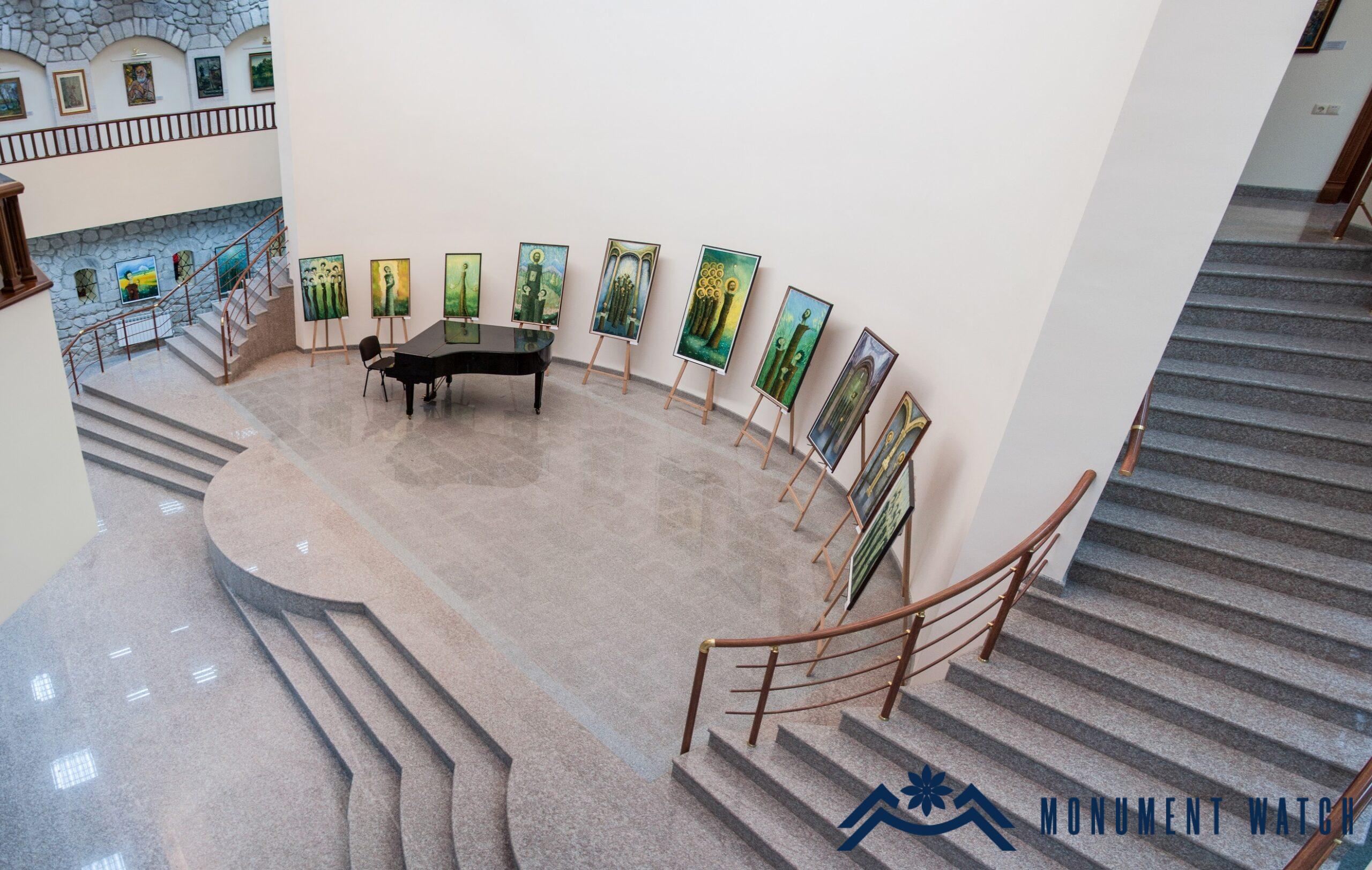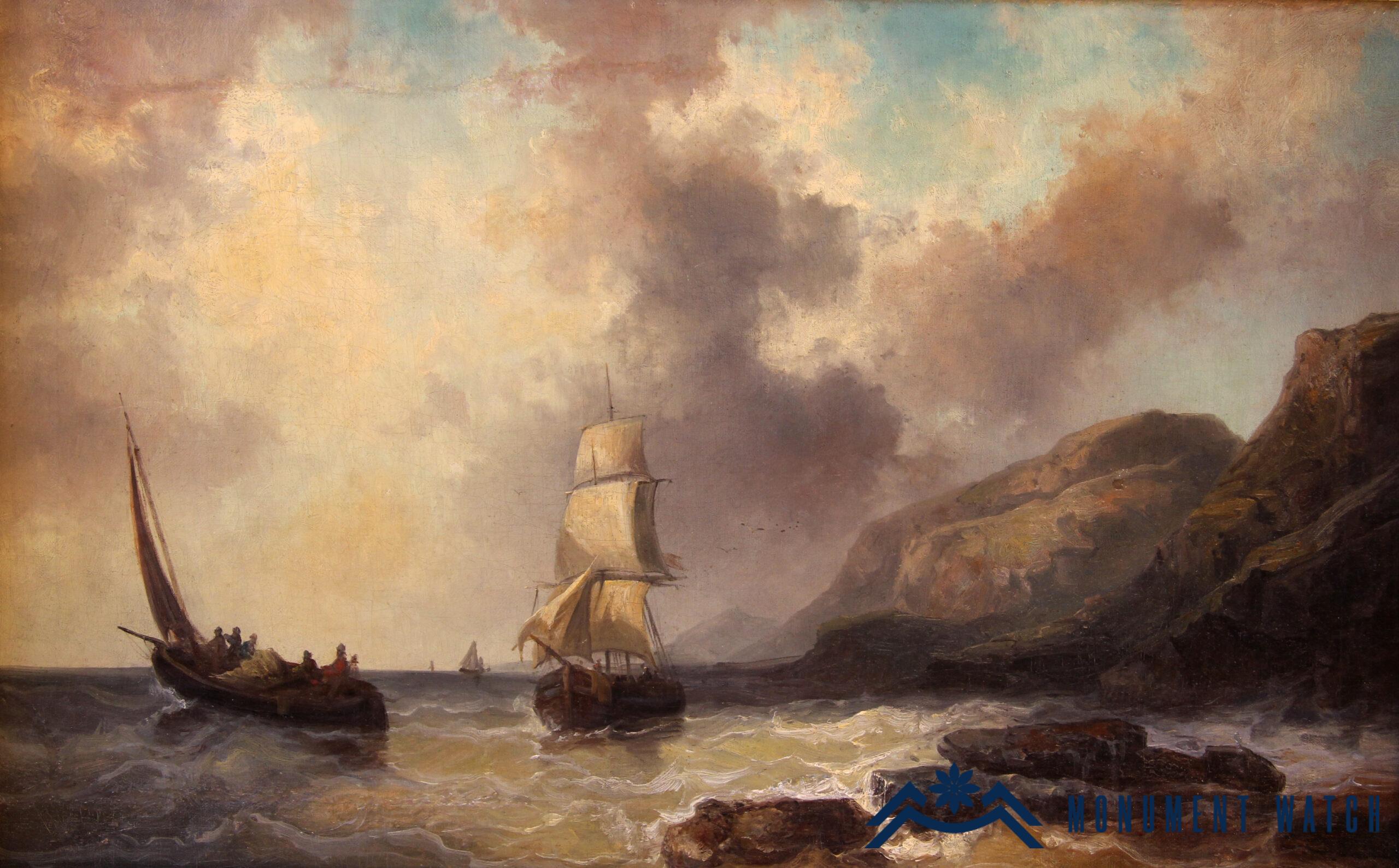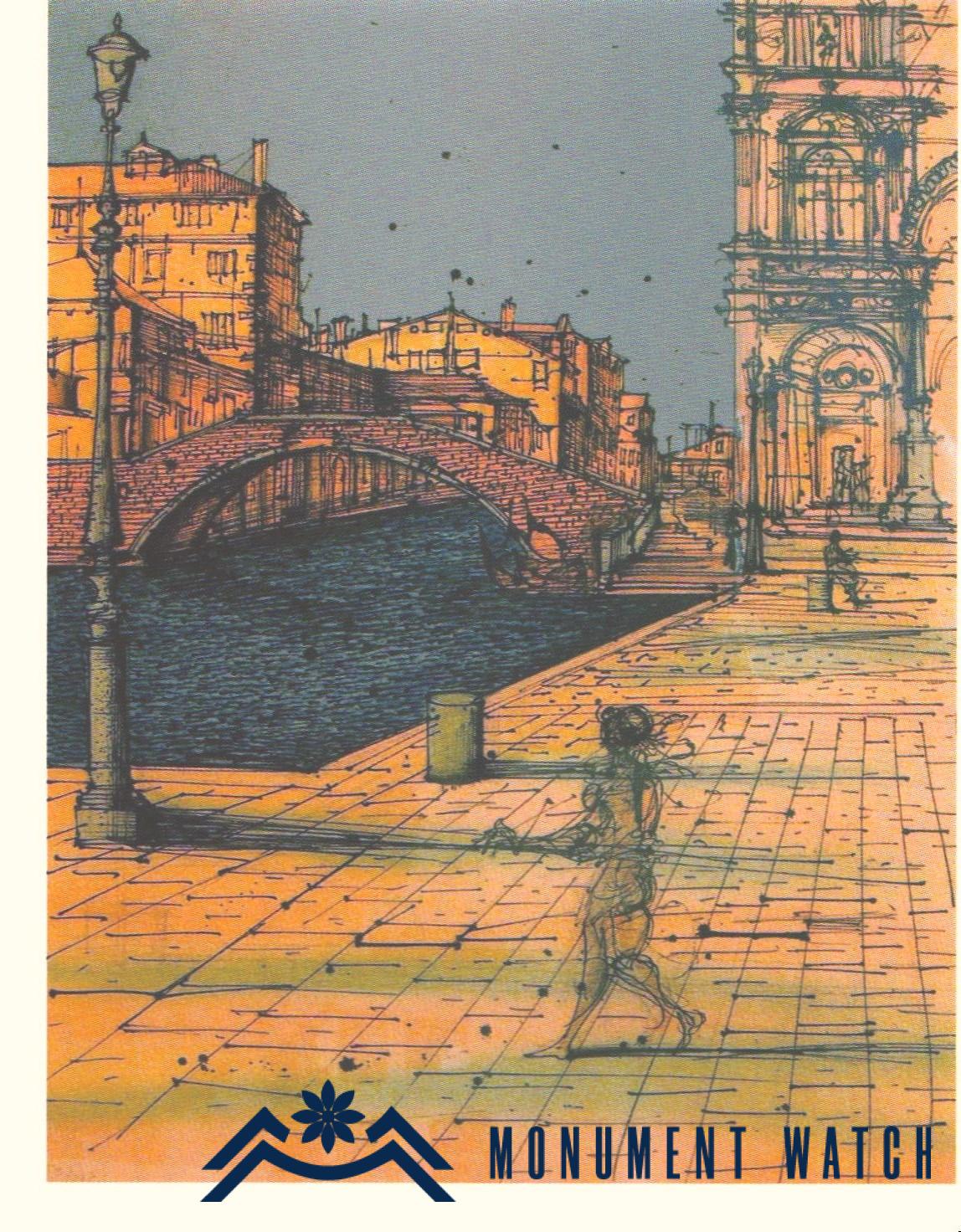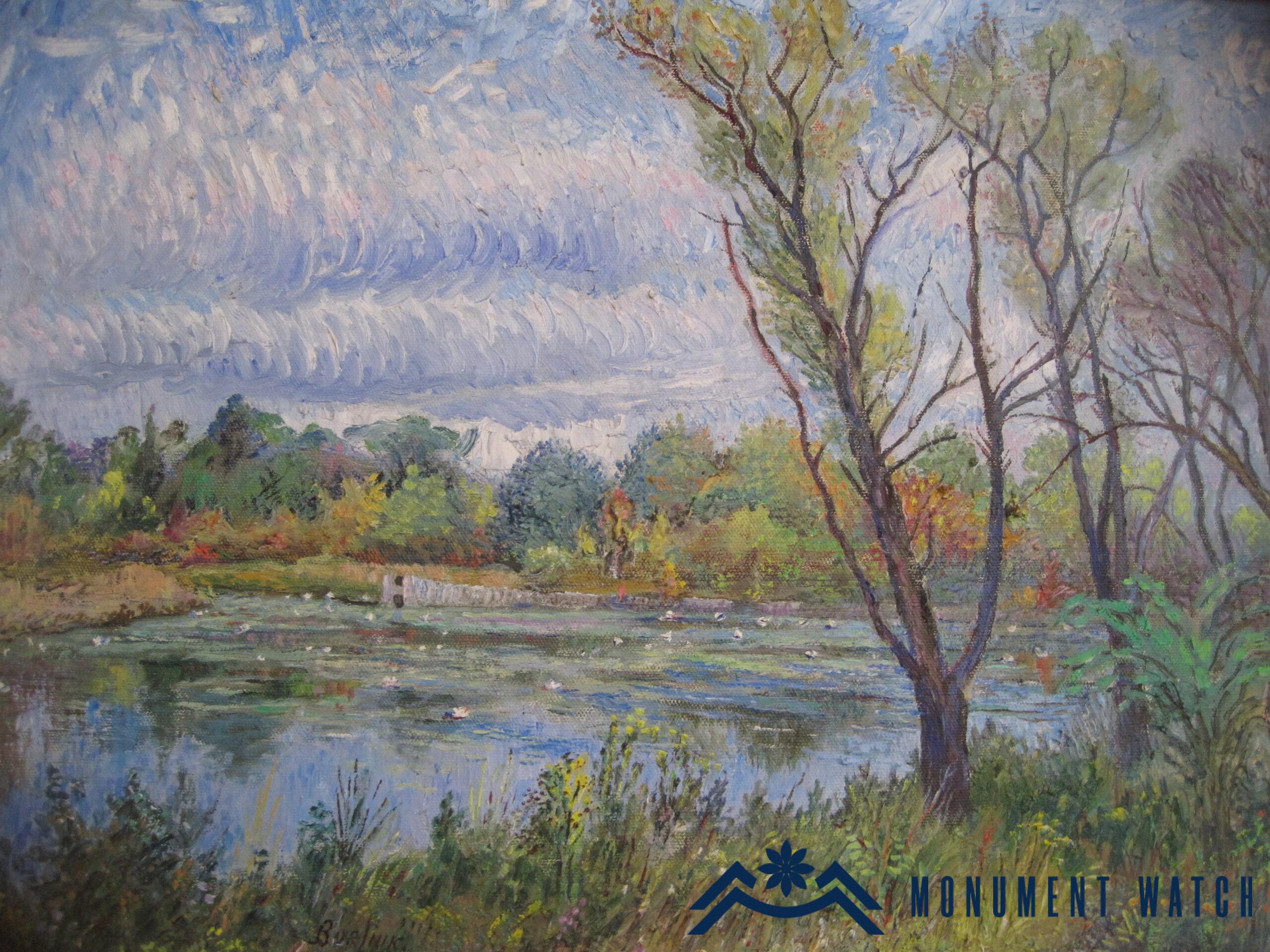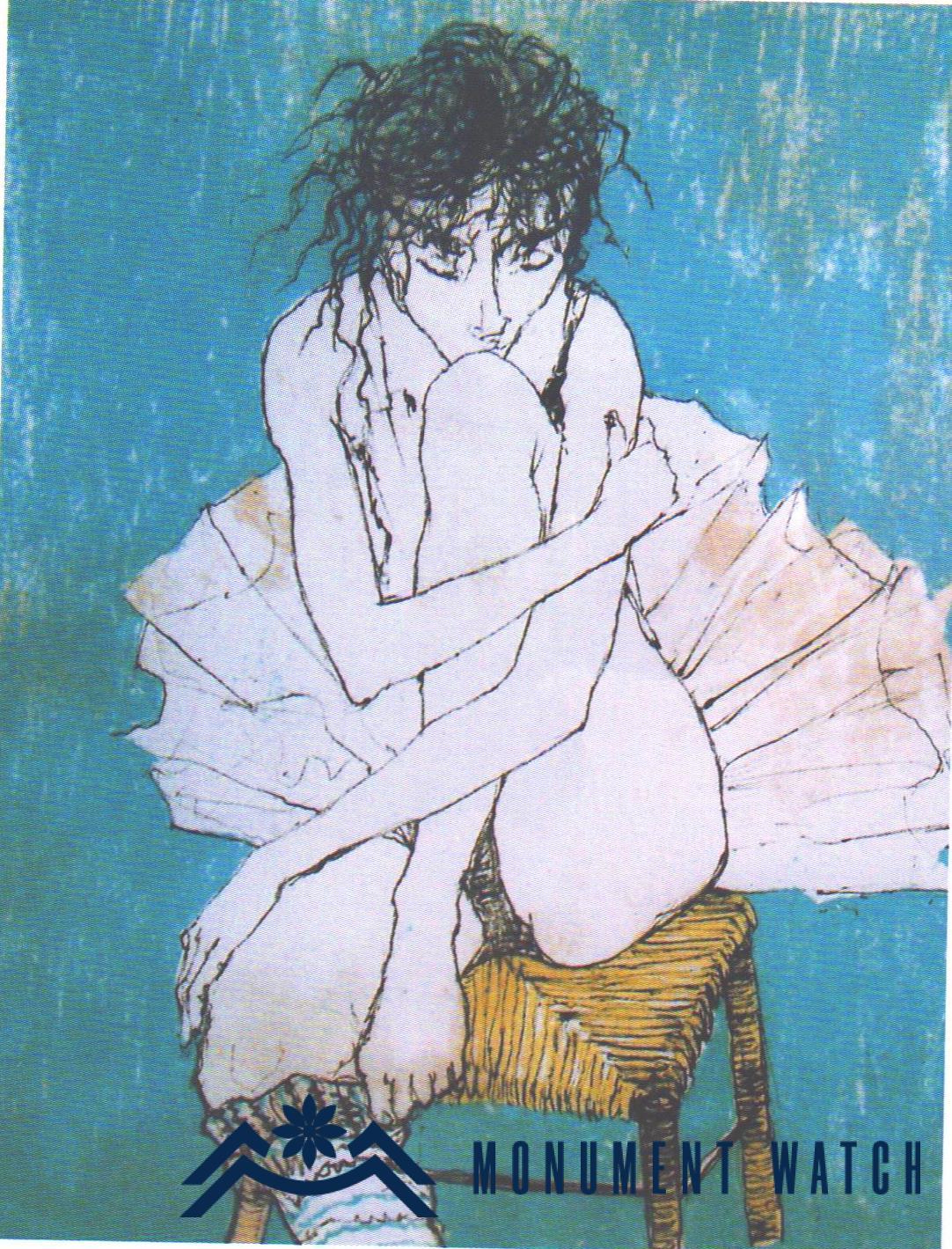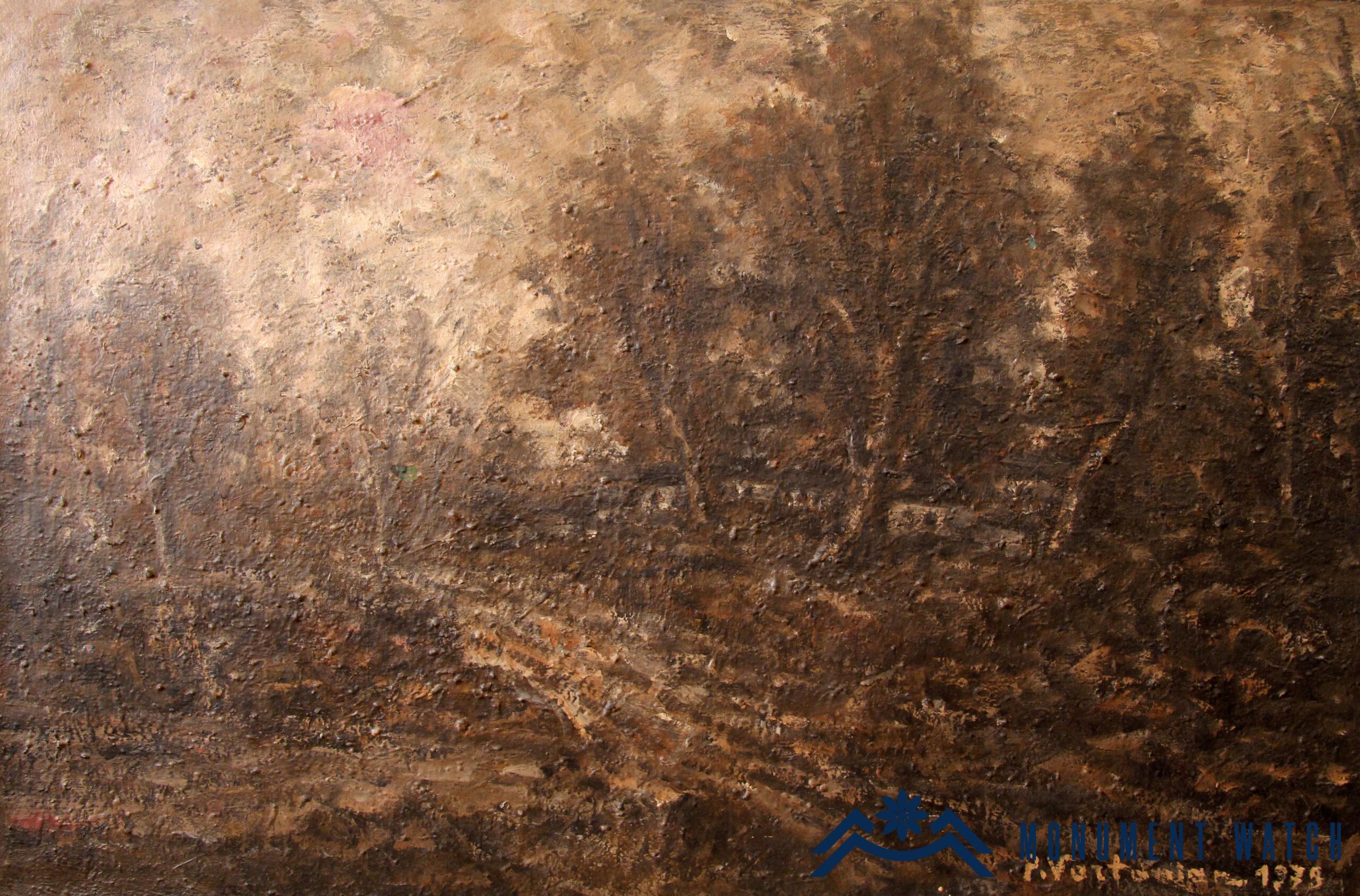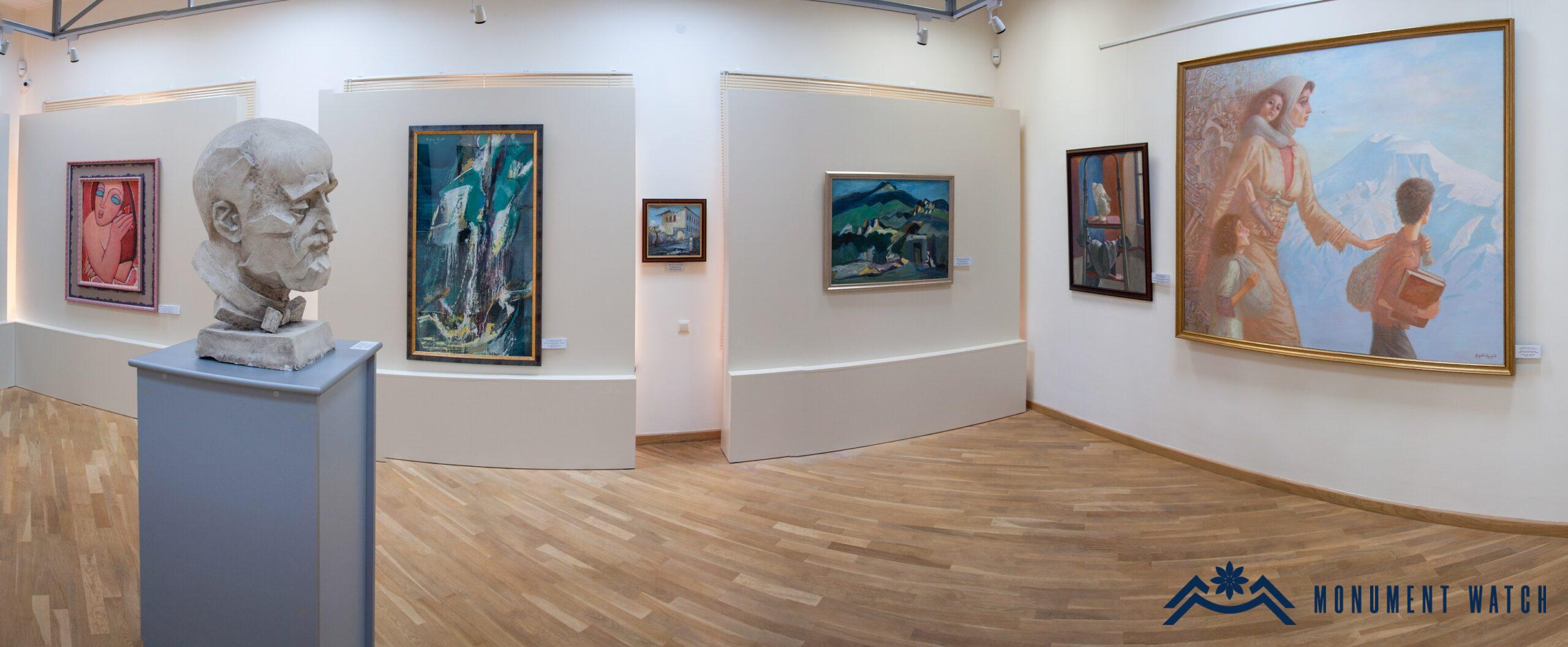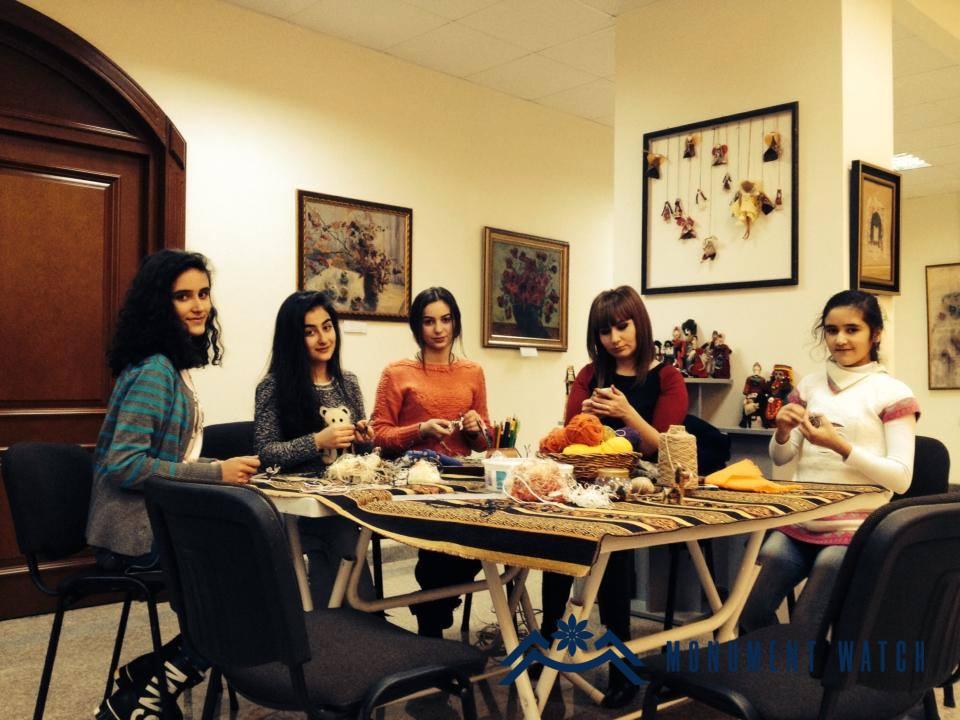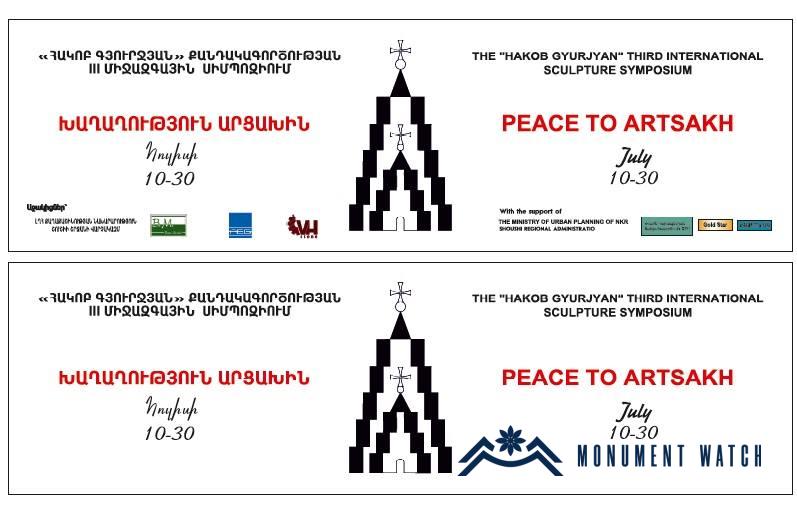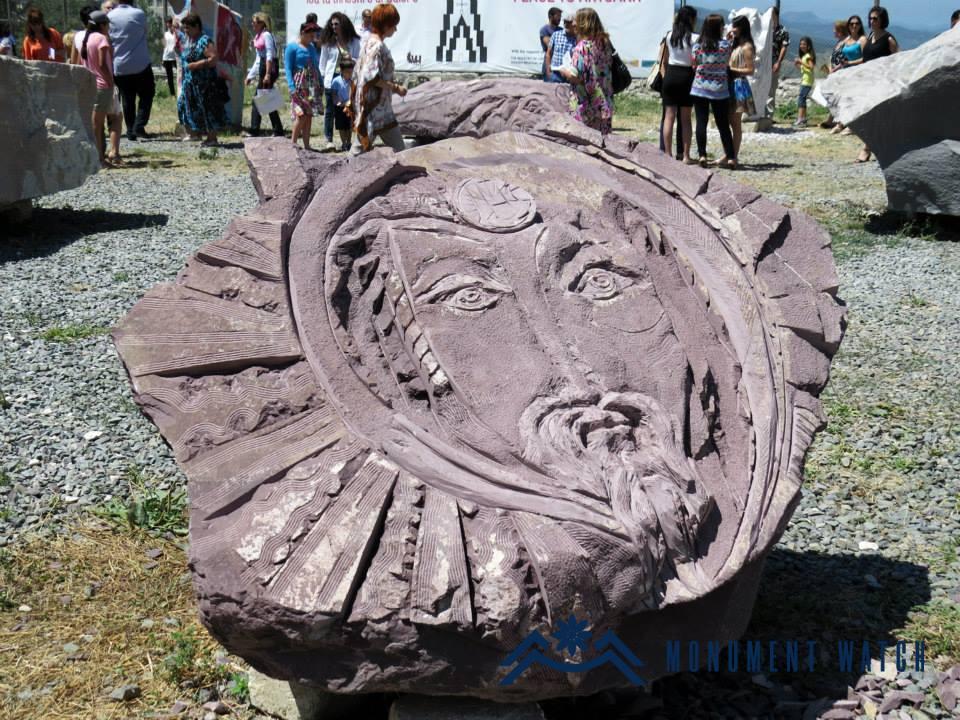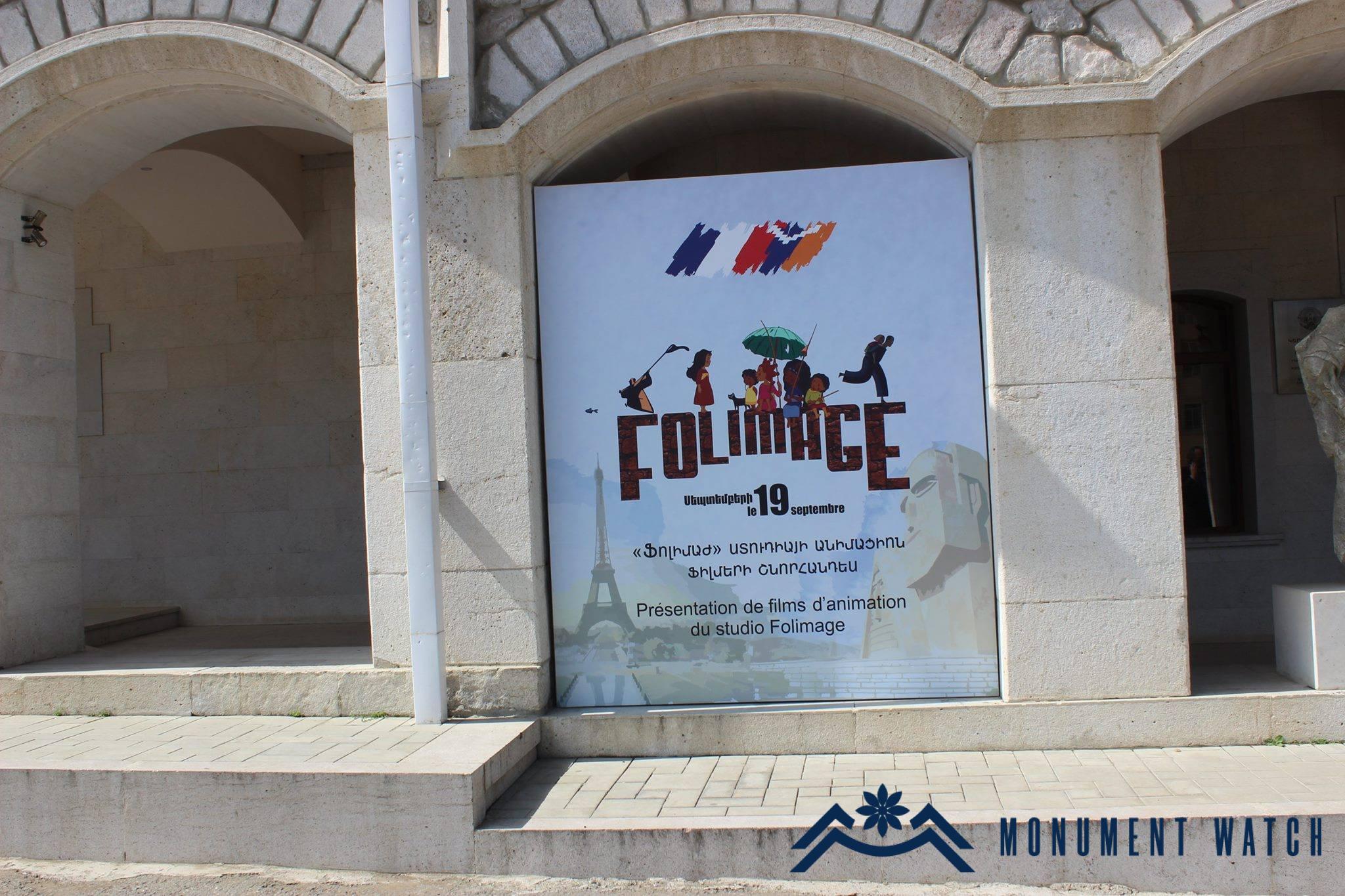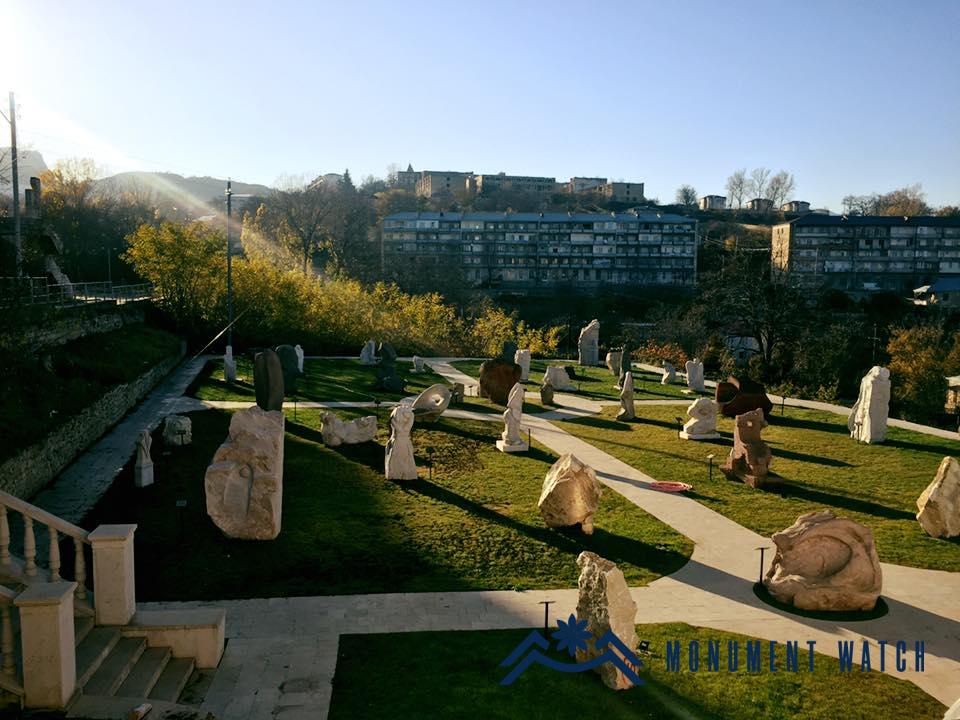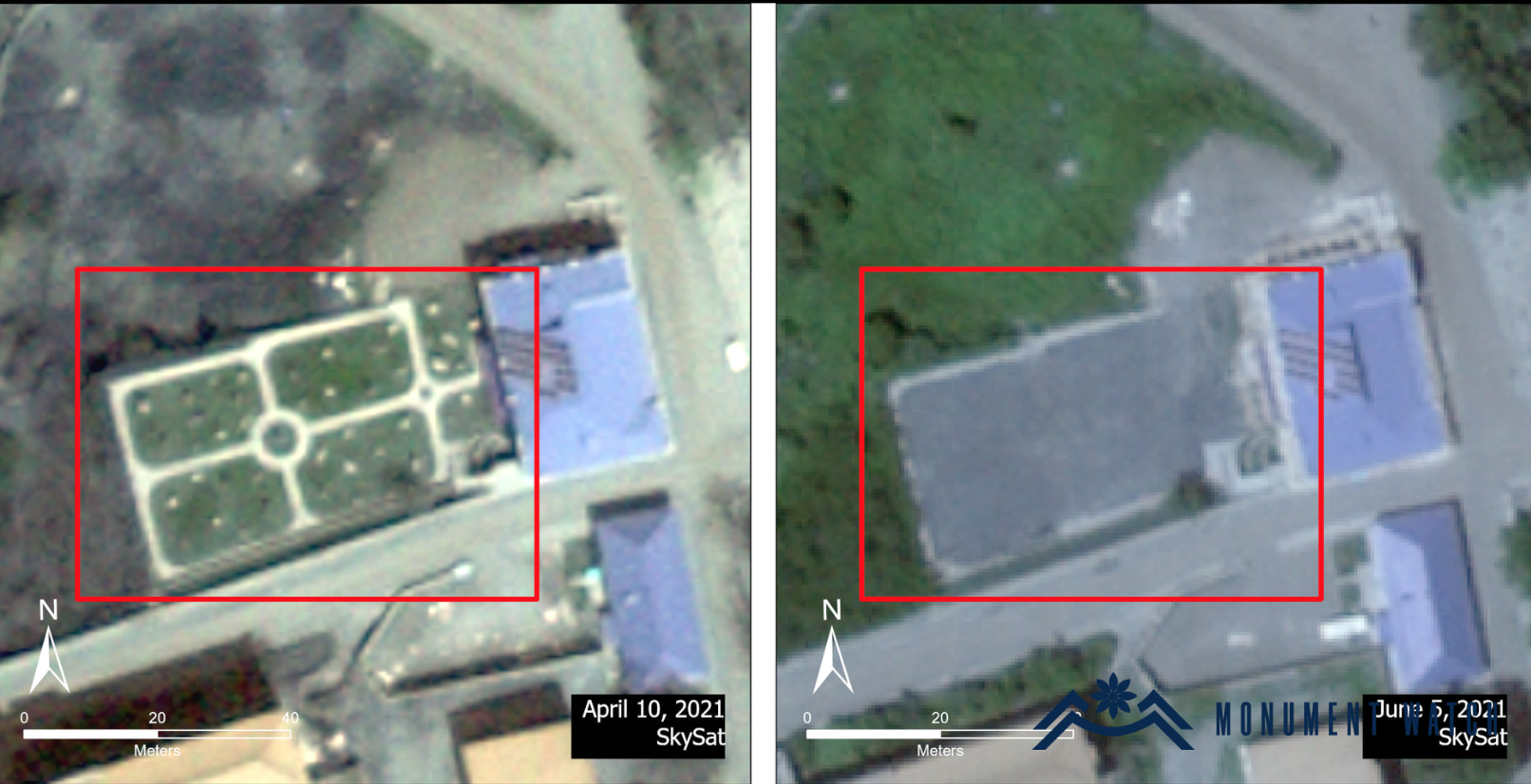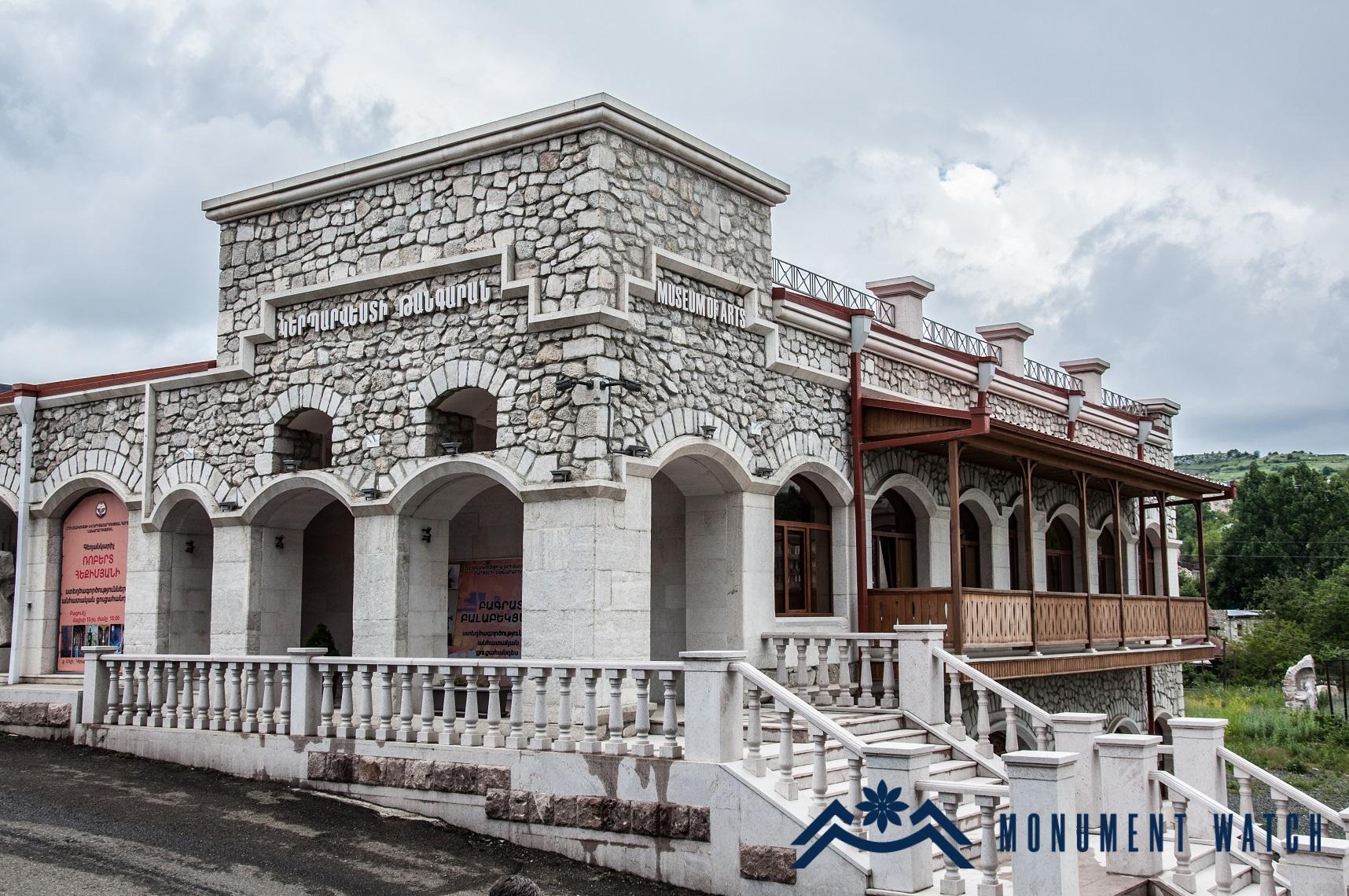
The Shushi State Museum of Fine Arts
History
The Shushi State Museum of Fine Arts was inaugurated on May 9, 2013, through the initiative and sponsorship of Professor Grigor Arkadi Gabrielyants. Additionally, the State Museum of Geology, named after Professor Gabrielyants himself, was established, drawing from his private collection. For further information, please refer to https://monumentwatch.org/en/2023/05/09/the-state-museum-of-geology-named-after-grigor-gabrielyants-in-shushi/. The museum's initial collection was based on the personal collection of Grigor Gabrielyants, and over time, it continued to grow through various donations (Danielyan, Gasparyan 2022, 190).
The museum was housed in a building located at Ghazanchetsots 24, which was constructed on the foundation of Shushi's former caravanserai, preserving the architectural features of the original structure (Figs. 1, 2).
The collection
The collection comprised over 700 pieces, showcasing works by renowned artists such as M. Saryan, D. Burliuk, K. Sommer, Carzou, E. Chahine, Jansem, H. Kojoyan, H. Hakobyan, R. Khachatryan, P. Kuznetsov, A. Shevchenko, A. Safokhin, D. Plavinsky, and others (Figs. 3-8). A distinctive characteristic of the museum was its extensive list of donors. Contemporary artists hailing from Artsakh, Armenia, Georgia, the Russian Federation, USA, France, Ethiopia, Indonesia, Madagascar, and various other countries contributed their artworks to the museum.
The museum's collection was further enriched by artworks created by participants of the annual sculpture symposium.
The activity of the museum before the war
The State Museum of Fine Arts was regarded as one of the key cultural centers in Shushi and Artsakh as a whole. Besides its permanent collection, it frequently hosted temporary exhibitions by contemporary artists and organized various educational and cultural programs. According to the data from the Artsakh Republic Ministry of Education, Science, Culture, and Sports, the museum welcomed over 10,000 visitors annually from various countries around the world.
"The Park of Sculptures"
The Park of sculptures was also situated within the courtyard of the State Museum of Fine Arts. It came into existence in 2019, inspired by and constructed upon the sculptures crafted during five international symposiums, each bearing the name of the renowned sculptor Hakob Gyurjian. These symposiums were conducted in Shushi between 2011 and 2017 (specifically, in 2011, 2012, 2014, 2016, and 2017). The initiative for this endeavor was spearheaded by Grigor Gabrielyants, with significant contributions from the acclaimed sculptor Vigen Avetis. Numerous sculptors hailing from Italy, the USA, China, Croatia, Belgium, Japan, India, Belarus, the Russian Federation, Serbia, and various other nations participated in these symposiums. They contributed their creative works to the people of Artsakh (Figs. 11-14).
The museum also hosted events and visits dedicated to occasions such as the International Day of Museums, the Day of European Cultural Heritage, and various other professional holidays.
The condition after the war
During the 44-day war, the main collection of the museum was relocated to a bomb shelter, but unfortunately, it was not evacuated from there and subsequently came under the control of the Azerbaijani armed forces.
In the videos circulated after the war, it was evident that the front wall of the building had sustained damage due to the bombing. Additionally, according to satellite photos released on August 14, 2021, and published on the Caucasus Heritage Watch Facebook page, all 51 sculptures that were situated in the "Sculpture Park" of the Shushi State Museum of Fine Arts have vanished (Fig. 16), and the area has been entirely cleared.
The fate of both the paintings and sculptures remains uncertain. It is unclear whether they were relocated or destroyed. For further information about the destruction of the "Park of Sculptures" at the Shushi State Museum of Fine Arts, you can refer to this link: https://monumentwatch.org/en/alerts/destruction-of-the-park-of-sculptures-of-the-state-museum-of-fine-arts-in-shushi/.
The museum and international law regulations
The 1954 Hague Convention for the Protection of Cultural Property in the Event of Armed Conflict, along with its two protocols (1954 and 1999), serves as the international legal and legislative framework for safeguarding cultural property, including museums and their collections, during times of armed conflict. Article 4 of the 1954 Hague Convention for the Protection of Cultural Property in Time of Armed Conflict prohibits various actions that can cause harm to cultural heritage. These actions include vandalism, theft, robbery, and misappropriation, as well as engaging in hostilities and reprisals that target cultural heritage.
It is prohibited to destroy cultural or spiritual values in occupied territories, according to the first Hague Protocol of 1954. The requirement is reaffirmed in the Second Hague Protocol of 1999, which classifies such an act as an international crime under Article 15. Actions aimed at destroying cultural values are also prohibited by four international conventions and protocols on the protection of victims of war, rules, and customs of war of Geneva of August 12, 1949, as well as applicable UN resolutions and human rights treaties.
Bibliography
- Danielyan, Gasparyan 2022 - Danielyan E., Gasparyan L., Museums of the City of Shushi, Works of the History Museum of Armenia, Yerevan, 189–190.
